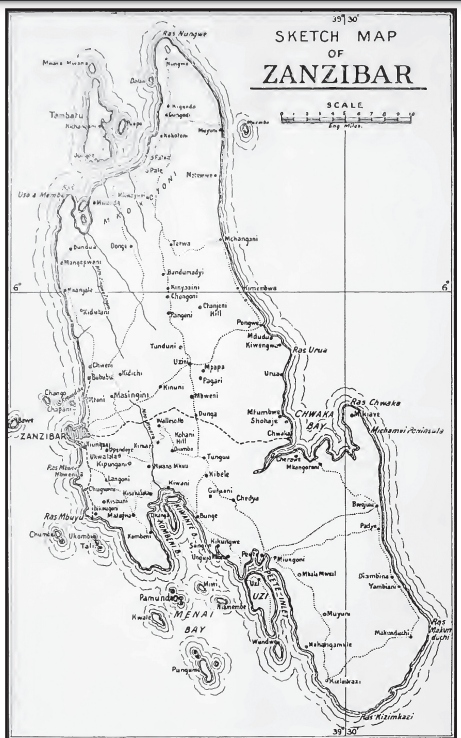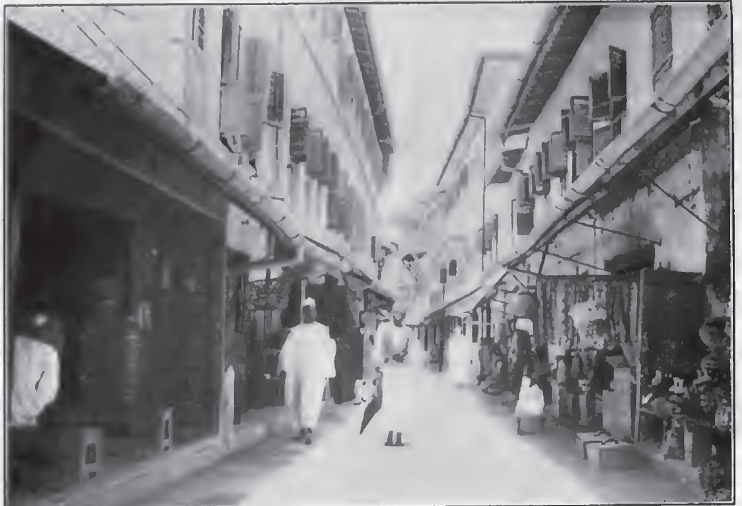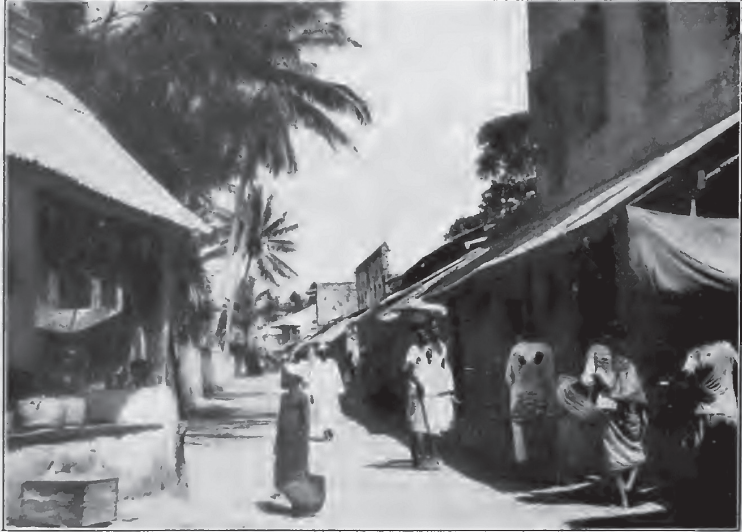Did you know that before the 19th century, Indians arrived and served as traders, financiers, agents and artisans in many of the East African coastal regions? Here’s an interesting piece of history that connects India and Zanzibar
Santhosh Abraham

In early July 2023, while browsing through the India Office Records in the Asian and African studies section of The British Library in London for documents related to ivory trade that happened during the British Raj in India, I stumbled upon a report published in 1919 on the trade conditions that existed in the East Africa Protectorate, in regions such as Uganda and Zanzibar. The report was a response to the British colonial inquiry on the possibilities of stimulating trade between East African territories and the Union of South Africa of the British Empire.
The report also includes an interesting map of Zanzibar along with notes on its people, climate, commodities that were traded and, more importantly, a note on the Indian trading community on the island. At the time when I was reading this report, back home in Chennai, IIT Madras was all set to start its first global campus in Zanzibar, Tanzania.
My focus immediately shifted towards Zanzibar. While looking at the early 20th century map of the city, I realised that it is indeed a small island, but as historians say, “It is a territory with a long history that has evoked romantic notions far beyond its shores. More importantly, Zanzibar has occupied a prominent place in the history of East Africa.”
Before becoming a protectorate of the British Empire’s armed forces in 1890, Zanzibar port did control the external trade of a large part of East Africa and turned into a trading, cultural and intellectual hub. Being a vital location in the Indian Ocean region, what was Zanzibar’s connection with the western coast of India?
When I teach the history of the Indian Ocean to my Masters’ students at the Humanities and Social Sciences Department, IIT-M, I often get excited introducing the dhow boats that sailed through the Indian Ocean — during the 13th and 16th centuries — carrying sailors from the Arabian Peninsula, along the East African coast and to Indian coastal regions.
Before the Europeans arrived, these wind-powered dhow were historically identified as representing a pulsating and cosmopolitan movement of trade goods and a diverse population. This also meant trade and exchange of knowledge in the Indian Ocean.
According to historians, before the 19th century, Indians arrived and served as traders, financiers, agents and artisans in many of the East African coastal regions. The rise of the British’s influence in the Indian Ocean during the 19th century, and passenger ships and cargo services of the British India Steam Navigation Company, resulted in the dawn of a new era in trade routes and commercial activities in the Indian Ocean, particularly between Western India and East Africa. During this period, the East African coastal regions witnessed a flourishing network of traders, merchants, indentured labourers, bankers, officials, and professionals who originated from different parts of the Indian subcontinent.
Due to the rise in trade networks in the Indian Ocean, the island of Zanzibar with bazaars, mosques and a cosmopolitan society effectively became a “huddled, unplanned block of Asia”. During the 19th century, the Indian traders from Gujarat had reportedly visited Zanzibar on a seasonal basis that further allowed trade connections to exist between East Africa and the then growing markets in Western India.
Though it was for economic reasons, especially trade, that made the early presence of Indians possible in Zanzibar, the other striking aspect as a result of migration was the exchange of ideas, practices and administrative and institutional knowledge. Rather than characterising it as imperialistic or hegemonic, the migration of Indians to East African coasts; for example, the transnational migration of Indian medical professionals during the height of British rule, was perceived as a means of social welfare projects. Such exchanges between East Africa and India under British rule have reflected and reinforced the bond between the two countries and created a sense of mutual trust and reciprocity.
India’s long history with its relationship with Africa and the similarities two countries share – in the struggle against colonialism, non-aligned movement and concerns over various socio-economic and demographic challenges in the Indian Ocean, are some strong reasons that forged a mutually beneficial relationship.
The new IIT Madras campus at Zanzibar is but a natural step to further revive the historical and transnational associations that characterise the East African regions of the Indian Ocean. As far as Humanities and Social Sciences is concerned, the latest offshore campus certainly gives us the opportunity to understand the development of transnational cultural, economic and intellectual exchanges between India and Zanzibar – both from a historical perspective, and in the current socio-political context.
The author teaches history at the Department of Humanities and Social Sciences, IIT-M.


Nuggets of history
- Indians were part of Tanzanian society long before Tanzania appeared on the world map as a nation in the 1960s. For centuries, trade between the Indian continent and East Africa was controlled by the pace of the monsoon winds and was at times dangerous for tradesmen. The main trade items that were transported by dhows included cotton fabrics, ivory and spices. Before Arabs occupied the East African Coast where they introduced a new architecture by constructing strong towns and mosques, most Indian traders had a few temporary establishments in African ports. However, if the great sailor Vasco da Gama is to be believed, it is possible that there was a large number of Indians in the two towns of Mombasa and Malindi.
- When Zanzibar became the capital of Oman in 1832, many Indians who were living in Muscat followed Sultan Seyyid Said to Zanzibar where they benefited from his protection. Indians were appointed to key administrative positions like port captains and heads of customs. Once again, Indian communities, especially those that had acquired British citizenship, benefited a lot after the arrival of the British in East Africa. A trade agreement between Seyyid Said and the British gave Indians the right to live in Zanzibar and trade under the protection of the sultan. With the establishment of a British consulate, the number of traders from the Indian subcontinent grew progressively from 2,500 in 1870 to 6,000 in the beginning of 1900.
- Most Tanzanian Indians speak Gujarati. According to reports, Gujarati was an optional subject in schools apart from languages such as English, French and Swahili. Apart from Gujarati, some of the other languages spoken among immigrants are Hindu, Punjabi, Urdu, Konkani, Dalda and Goan. Interestingly, some of the Swahili words such as kabat for kabati (cupboard), madaf for madafu (coconut) and fagyo for fagio (broom) were added to Gujarati language.






